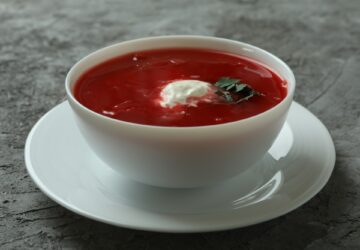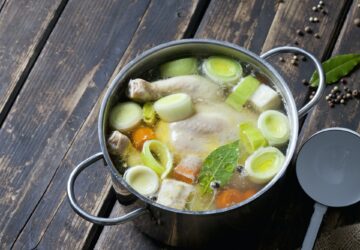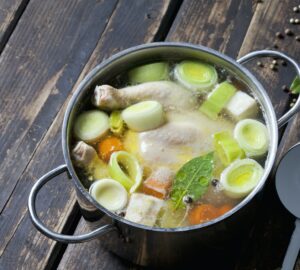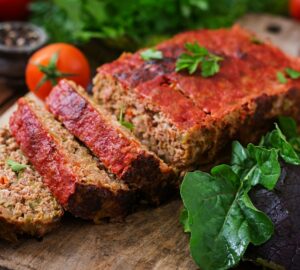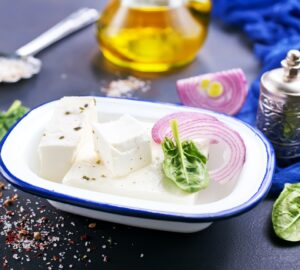Spices are aromatic plant substances used to add flavor, aroma, and color to food, and they have been an essential part of culinary traditions around the world for centuries. Derived from various parts of plants, such as seeds, fruits, bark, roots, and flowers, spices have also played significant roles in trade, medicine, and religious rituals throughout history. The use of spices can transform a simple dish into a flavorful and aromatic experience, highlighting or complementing the natural flavors of the ingredients.
Here are some popular spices and their uses:
- Black pepper: Originating from the Piper nigrum plant, black pepper is one of the most common and versatile spices. It is used both as a seasoning and a preservative, and its sharp, mildly spicy flavor pairs well with a wide range of savory dishes.
- Cinnamon: Derived from the bark of the Cinnamomum tree, cinnamon has a warm, sweet, and slightly spicy flavor. It is used in both sweet and savory dishes, including baked goods, curries, and stews, and is a key component of many spice blends like garam masala and pumpkin pie spice.
- Cloves: These dried flower buds from the Syzygium aromaticum tree have a warm, sweet, and pungent flavor. They are used whole or ground in a variety of sweet and savory dishes, such as gingerbread, pickles, and spice blends like ras el hanout and Chinese five-spice powder.
- Cumin: Cumin seeds come from the Cuminum cyminum plant and have a warm, earthy, and slightly bitter flavor. They are often used in Middle Eastern, Indian, and Mexican cuisines in dishes like curry, chili, and spice blends like taco seasoning and baharat.
- Cardamom: Native to India, cardamom comes in two main varieties, green and black. Green cardamom has a sweet, floral, and slightly citrusy flavor, while black cardamom is smokier and more intense. Both are used in sweet and savory dishes, such as masala chai, rice dishes, and baked goods.
- Nutmeg: Nutmeg is the seed of the Myristica fragrans tree and has a warm, sweet, and slightly nutty flavor. It is often used in sweet dishes like custards and pies, but also adds depth to savory dishes like béchamel sauce and spice blends like quatre épices.
- Paprika: Made from dried and ground bell peppers or chili peppers, paprika can vary in flavor from sweet and mild to hot and smoky. It is widely used in Hungarian, Spanish, and Middle Eastern cuisines, adding color and flavor to dishes like goulash, paella, and shakshuka.
- Turmeric: Turmeric comes from the root of the Curcuma longa plant and has a warm, earthy, and slightly bitter flavor. Known for its bright yellow color, it is used in Indian, Persian, and Thai dishes like curry, rice, and spice blends like curry powder.
- Saffron: Saffron is derived from the dried stigmas of the Crocus sativus flower and is one of the most expensive spices in the world. It has a subtle, earthy, and slightly floral flavor and is prized for its ability to impart a rich, golden hue to dishes like risotto, paella, and biryani.
- Coriander: Coriander seeds come from the Coriandrum sativum plant and have a warm, citrusy, and slightly sweet flavor. They are used in a variety of cuisines, such as Indian, Middle Eastern, and Mexican, and are a key ingredient in spice blends like
garam masala, ras el hanout, and dukkah.
- Fennel seeds: Fennel seeds come from the Foeniculum vulgare plant and have a sweet, licorice-like flavor. They are often used in Indian, Italian, and Mediterranean cuisines in dishes like sausages, spice blends, and baked goods.
- Star anise: This star-shaped spice comes from the Illicium verum tree and has a sweet, licorice-like flavor similar to aniseed. It is commonly used in Chinese and Vietnamese cuisines and is a key ingredient in Chinese five-spice powder and pho broth.
- Mustard seeds: Mustard seeds come in three main varieties – black, brown, and yellow – and have a pungent, slightly bitter flavor. They are used in various cuisines, such as Indian, European, and American, in dishes like pickles, spice blends, and condiments like mustard.
- Fenugreek: Fenugreek seeds come from the Trigonella foenum-graecum plant and have a slightly bitter, maple-like flavor. They are commonly used in Indian and Middle Eastern cuisines in dishes like curry, spice blends, and bread.
- Allspice: Allspice berries come from the Pimenta dioica tree and have a warm, sweet flavor that is reminiscent of cinnamon, cloves, and nutmeg. It is used in both sweet and savory dishes, such as Jamaican jerk seasoning, pickling spice blends, and desserts like pumpkin pie.
Flavor pairings:
- Cinnamon, nutmeg, and cloves: This trio of warm spices is often used together in sweet dishes like pies, cookies, and spiced cakes, as well as in savory dishes like Moroccan tagines and Indian curries.
- Cumin, coriander, and paprika: These spices are frequently combined in Middle Eastern, Indian, and North African cuisines, providing a warm, earthy base for dishes like curry, stews, and spice rubs.
- Turmeric, ginger, and black pepper: This combination is known for its anti-inflammatory properties and is commonly found in Indian and Southeast Asian cuisines, particularly in dishes like curry, soup, and rice dishes.
- Fennel seeds, orange zest, and rosemary: This fragrant trio is often used in Mediterranean and Italian cuisines, particularly in dishes featuring seafood, pork, and poultry.
- Cardamom, cloves, and star anise: This aromatic combination is used in a variety of sweet and savory dishes, such as Indian masala chai, rice dishes, and spice blends like Chinese five-spice powder.
- Thyme, bay leaves, and parsley: This trio of herbs, known as the French “bouquet garni,” is often used together in traditional French and European cuisines to flavor stocks, soups, and stews.
- Oregano, basil, and garlic: This combination is a staple in Italian and Mediterranean cooking, used in dishes like pasta sauce, pizza, and salad dressings.
- Chili, lime, and cilantro: This zesty trio is commonly used in Mexican, Thai, and Vietnamese cuisines to add a fresh, tangy kick to dishes like tacos, curries, and noodle dishes.
In conclusion, spices are essential ingredients that can elevate the flavors, aromas, and visual appeal of a wide variety of dishes. By understanding the characteristics and flavor pairings of popular spices, home cooks and professional chefs alike can create a multitude of delicious and diverse dishes that showcase the vibrant and complex flavors that spices have to offer.
